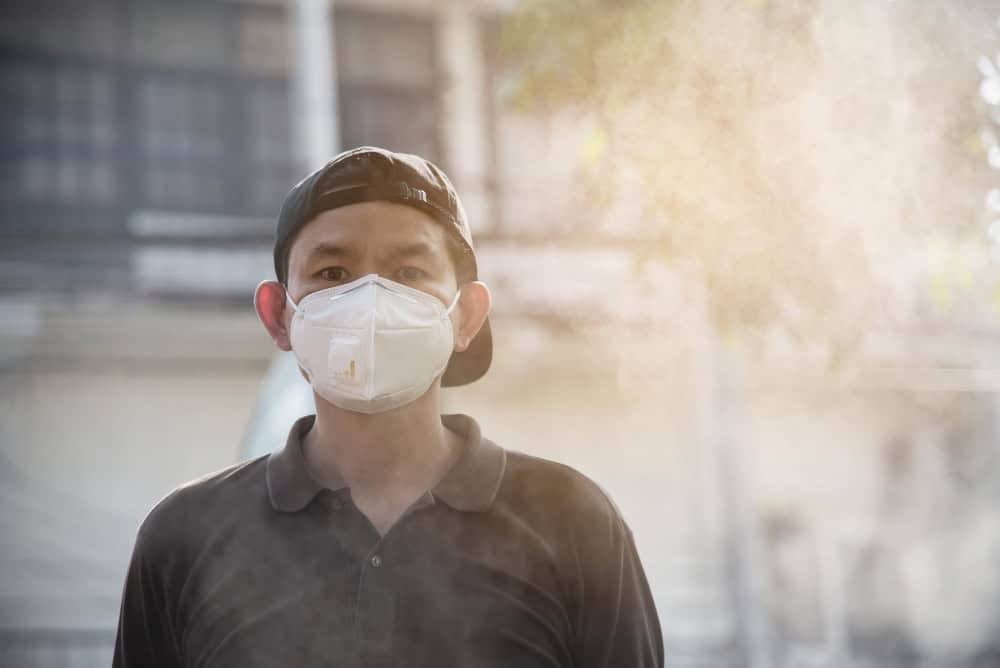
The air we breathe in is not just that; it is composed of several gaseous components. While oxygen is the lifegiver, other gases in the air can harm our health. While traffic and industrial fumes are often the most obvious culprits, ozone is often overlooked. In contrast to the protective layer found high in our atmosphere, this “bad” ozone at ground level is a significant air pollutant.
Breathing it in silently day after day affects our lungs, resulting in respiratory difficulties ranging from a common cough to long-term respiratory illness. So, how does ozone sneak into our daily lives, and what does it mean for our ability to breathe easily? Join us as we discuss what ozone pollution is and how ozone pollution risk you health.
What Is Ozone Pollution?

Ozone creates a screen high in the stratosphere that prevents the sun’s damaging ultraviolet (UV) rays. However, it turns into a “bad” actor down here at ground level. Ironically, this harmful ozone is made up of the same Oxygen that is the foundation of life. When the oxygen (O2) molecule is exposed to ultraviolet rays of the sun, it is broken down into two oxygen atoms. These atoms then go on to react with oxygen gas in the environment to form Ozone (O3).
Meanwhile, when it comes to ground ozone, it is formed when pollutants from automobiles, power plants, and industries react with sunshine and heat. This explains why, on hot, sunny days, especially in urban and suburban areas, ozone pollution is higher.
Although the effects of ozone on the lungs are the most widespread, they are not the only ones. According to research, short and long-term ozone exposure has also been related to an elevated risk of cardiovascular disease. The inflammation and oxidative stress resulting from ozone can spread throughout the body, potentially contributing to a variety of cardiac conditions.
How Does Ozone Pollution Risk Your Health?

There are several health risks associated with exposure to ground ozone pollution. Inflammation and irritation of the tissues lining human airways can result from breathing in ozone, which can harm respiratory tract tissues. This results in several symptoms, including tightness in the chest, coughing, and a worsening of asthma symptoms.
Furthermore, ozone exposure can cause shortness of breath by lowering the amount of air that the lungs can take in. When ozone levels are high enough, lung cells become more permeable, making them more vulnerable to toxins and microbes.
Who Is Most At Risk?
People with asthma, youngsters, older folks, and those who are active outside, particularly outdoor laborers, are the most vulnerable to breathing ozone-containing air. Also, ozone exposure puts people at higher risk if they have specific genetic factors or if they consume fewer nutrients, such as vitamins C and E. Given that their lungs are still developing and that they are more likely to be active outside during periods of high ozone, children are particularly vulnerable to the negative effects of ozone exposure. Asthma is also more common among children than in adults.
How To Protect Your Lungs?
While ozone pollution may appear unavoidable, there are practical measures to lower your risk. Checking the Air Quality Index (AQI) on a hot, sunny day is the ideal place to start. It is advisable to schedule outside activities for the morning or late evening when the air is cleaner, as ozone levels are usually at their maximum in the afternoon and early evening. Maintaining a clean home environment is also important. When the air quality is bad, shut the windows and, if you can, use air purifiers. Avoid products with strong fumes, such as some cleaners, paints, or solvents.
FAQs
1-Who is most at risk from ozone pollution?
Anyone can be affected, but people with asthma, children, the elderly, and those who spend a lot of time outdoors are most at risk.
2-How does ozone affect our lungs?
Ozone irritates the airways, making it harder to breathe, and worsens asthma, COPD, and other lung conditions.
3-What are the most common symptoms of ozone exposure?
The most common symptoms are a dry cough, chest pain, and a feeling of shortness of breath. It can feel similar to having a sunburn on your lungs.
4-Can healthy people be affected?
Yes, even healthy individuals may feel throat irritation, coughing, or reduced lung capacity on high ozone days.
5-How can I check ozone levels?
Air quality apps, government websites, and local news provide daily updates and alerts about ozone levels.
Sources
1-Srivastava S, Jain H, Sahoo A, Singh N, Gupta P, Sharma V, et al. Ozone exposure and respiratory health: A systematic review. Available from: https://www.sciencedirect.com/science/article/pii/S2667325824001213
2-Iftikhar S, Arshad L, Malik M, Ahmed T, Aslam A, Rizwan M. Health Effects of Ozone. PMC [Internet]. Available from: https://pmc.ncbi.nlm.nih.gov/articles/PMC4659648/
3-US National Library of Medicine. Health Effects of Ozone Exposure. PMC [Internet]. 2021 . Available from: https://pmc.ncbi.nlm.nih.gov/articles/PMC7837374/
4-California Air Resources Board. Health Effects of Ozone. CARB [Internet]. 2016. Available from: https://ww2.arb.ca.gov/resources/fact-sheets/health-effects-ozone
(The article is written by Ehsan Siddiqui, Team Lead, Clinical Health & Content and reviewed by Monalisa Deka, Senior Health Content Editor)
Recommended Reads
5 Common Causes Of Obesity You Should Be Aware Of!
6 Lesser-Known Evidence-Based Weight Loss Tips That Actually Work